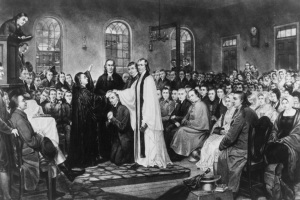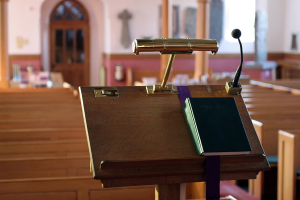Shrine Discovery in Judah May Confirm, Clarify Biblical Descriptions
An archaeologist from the Hebrew University of Jerusalem says he has discovered cultic shrines dating back to the time of the biblical King David, which may provide clarity to some obscure building references in the Bible.
Professor Yosef Garfinkel says his discoveries at Khirbet Qeiyafa, an ancient fortified city that is 30 kilometers southwest of Jerusalem and is adjacent to the Valley of Elah, have confirmed the biblical view of the region prior to the construction of Solomon's Temple.
"This is the first time that archaeologists uncovered a fortified city in Judah from the time of King David," Garfinkel said in a press release. "Even in Jerusalem we do not have a clear fortified city from his period. Thus, various suggestions that completely deny the biblical tradition regarding King David and argue that he was a mythological figure, or just a leader of a small tribe, are now shown to be wrong."
Among the findings uncovered at Khirbet Qeiyafa are pottery, tools made of stone and metal, art, and three rooms that served as shrines. The items found, Garfinkel says, reveal that those who used the shrines were both monotheistic and an-iconic (meaning they banned graven images of humans and animals). The Israelites of the Bible beliefs were the same, but were much different than the neighboring cultures.
"Over the years, thousands of animal bones were found, including sheep, goats and cattle, but no pigs. Now we uncovered three cultic rooms, with various cultic paraphernalia, but not even one human or animal figurine was found," said Garfinkel. "This suggests that the population of Khirbet Qeiyafa observed two biblical bans – on pork and on graven images – and thus practiced a different cult than that of the Canaanites or the Philistines."
Small "shrine models," or portable shrines, which were discovered at the site are marked by decorations which, the discoverers believe, may clarify the meaning of some biblical words that have lost their true meaning over time.
In the description of Solomon's palace in 1 Kings 7:1-6, for example, the word "Slaot" was translated "pillars," but they now say it would better be understood as "triglyphs," which are roof beams that also appear in Greek temples. The world "Sequfim," which has previously been understood to mean nine windows, they now say actually means "triple recessed doorway."
"For the first time in history we have actual objects from the time of David, which can be related to monuments described in the Bible," the press release, provided by the Israel Ministry of Foreign Affairs, states.
Hershel Shanks, editor of the Biblical Archaeology Review, told The Christian Post on Tuesday that the find is "extremely interesting" but needs to be examined further.
"The unfortunate thing is we don't have enough information ... to be all confident of the conclusions that Yosef Garfinkel is drawing," said Shanks.
One thing that should be considered is the miniature shrines that were uncovered by Garfinkel are not the first to be discovered, and some might interpret the finding as evidence of a Canaanite cult rather than an Israelite one.
The date of the artifacts is pretty accurate – they are from approximately 1,000 years Before Christ – although Shanks says it is impossible to say with certainty which biblical king was on the throne at the time.
"This may well have been Davidic, but it's hard to come down hard on it. But within that range, yes ... we have a lot of confidence in the date of it," he said.
Since 2007, archaeologists have excavated Khirbet Qeiyafa for six weeks each summer under the guidance of Garfinkel and Saar Ganor of the Israel Antiquities Authority. Their findings have been compiled and presented in a new book, Footsteps of King David in the Valley of Elah, which is published by Yedioth Ahronoth.
Shanks says the new find means that more is likely to come from the intriguing excavation site, and there could be some surprises ahead.
"You don't know what's going to come, and that's extremely exciting," said Shanks. "We all wish Yosef Garfinkel warm, good wishes for the spectacular things he's uncovering."
READ: SHOWDOWN IN THE MIDDLE EAST- IRAN, ISRAEL, & END TIMES PROPHECY




























